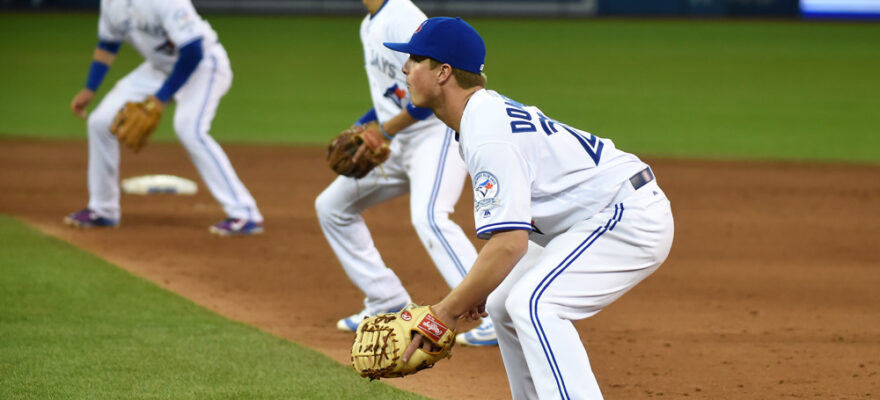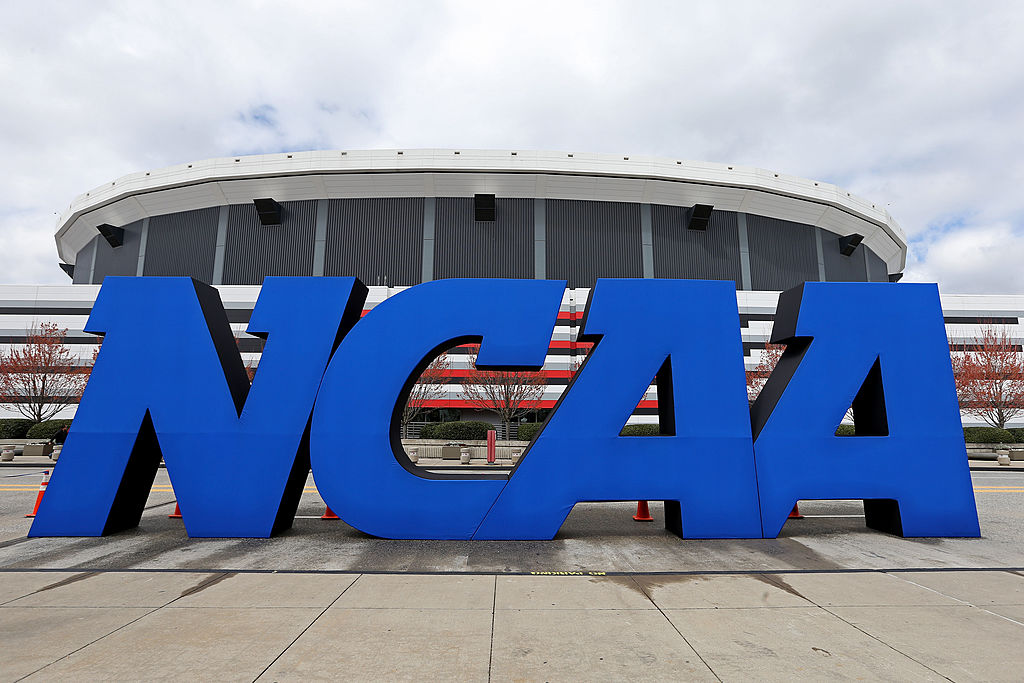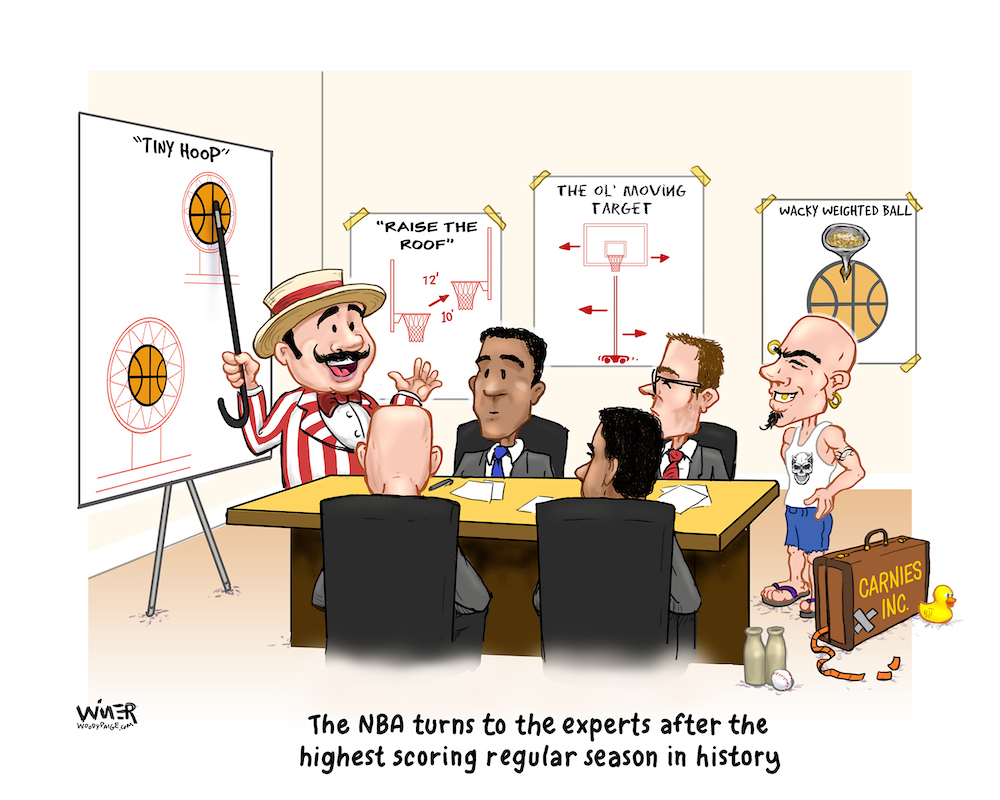Colorado Rockies Manager Bud Black is currently the only former big league pitcher among the 30 Major League Baseball skippers. So he’s the perfect guy for a radio interviewer to ask if the six (seven?) no-hitters that have already been thrown in MLB this season are a bad sign for baseball.
Black’s response wasn’t what you expected to hear.
He didn’t praise or credit the pitching, as most former pitchers would be inclined to do. Instead, he noted the rule changes that are being looked at by MLB – things like moving the mound back – and talked about how much bigger and stronger the pitchers are now and the fact that that power is overwhelming some hitters. He basically spoke the company line, saying the bottom line is that fans need to be entertained. He stopped short of advocating for rule changes, but he was heading that direction, which is very surprising.
Most of the rule changes being proposed, like moving the mound back by 12 inches are…stupid. The game itself is symmetrically perfect, which gets proven every game by every bang-bang play that happens on the bases. Trying to change the dimensions of any part of the infield would forever alter and damage the product.
Hopefully when the next collective bargaining agreement is finalized, some of these ridiculous rule changes that are being proposed – like stealing first base – will be dropped into the spittoon forever. At the moment, every rule change proposal is a bargaining chip for negotiations that will heat up in the fall. By the start of next spring training, all this nonsense should be over. We hope.
But there will likely be one new rule implemented that will favor hitters and will not involve changing the fabric (or the dimensions) of the game: MLB is going to have to ban defensive shifts.
Right now, you see teams putting three infield defenders on one side of the infield for nearly every at-bat. Their analytical information tells them that the batter will hit the ball to that side of the infield a high percentage of the time, so they set up their defense to be ready for it. And it works way more often that it doesn’t.
The fact that it works is not just a testament to the analytics and the resulting scouting reports, but also to the hard headedness and just plain stubborn incompetence of today’s big league hitters, who nearly to a man, have adopted an “all or nothing” approach at the plate. So far, seven times this season, entire line-ups have ended up with an entire game of nothing.
If this sounds harsh, it’s because I had the privilege of playing Major League Baseball in an era where pure hitters like Tony Gwynn, Don Mattingly, George Brett, Wade Boggs, Paul Molitor, Kirby Puckett and Robin Yount – just to name a few – would have destroyed teams that tried to put a shift on them. These guys would have hit the ball – with authority – to wherever the defense wasn’t playing. And given the huge holes that defenses are now giving hitters, if they persisted in shifting, Gwynn and several of the others would have hit better than .400 in multiple seasons. Basically, it would not have taken a rule change to stop teams from shifting on these guys.
The strange part of this is, that at the start of the analytics movement in baseball, getting on base was at the forefront. “On Base Percentage” was a staple of “Moneyball.” Now, going 1-for-4 with three strikeouts and a double is considered a good day at the plate. Hitters routinely try to hit the ball “through the shift” rather than trying to simply bunt or hit a single to the undefended part of the field in order to get on base.
Brad Pitt must be scratching his head at all this.
Somewhere along the line, getting on base no longer became the objective. Hitting the long ball became everything. And when you constantly try to hit the ball over the fence, your ability to hit singles and get on base suffers greatly. MLB batting averages are plummeting as a result.
So baseball’s issue isn’t that the pitchers are that much better, it’s that the hitters are that much less accomplished at just…hitting.
Hard Headed? Stubborn? Brainwashed by analytics? Whatever it is, that’s the reason for all the no-hitters.
And it does not appear that the hitters are going to change their approach. Strikeouts are going to continue to rise as long as hitters continue to swing for the fences.
That will not appease those who want to see the ball put in play more. The only thing that will change the way batters are currently approaching their at-bats is the advent of some version of an electronic strike zone, which will force hitters to swing earlier in the count and put more balls in play rather than “working the count” in order to try to get a pitch they can drive. The electronic strike zone is coming. When and how remains up in the air.
That won’t happen by next season, so don’t expect to see strikeouts go down any time soon. However, if MLB decides to force teams to keep two defenders on both sides of the infield, rather than overloading to one side or the other, we will see more hits — and fewer no-hitters.
That’s what they want, right?
More from The Woody Paige Sports Network:
- Woody Paige: That time I played blackjack with Michael Jordan in Monte Carlo
- Atlanta Falcons lose by accidentally scoring a touchdown
- John Elway’s 7 best moments as General Manager of the Denver Broncos
- 3 Potential landing spots for Julio Jones
- Denver Broncos favored to land Aaron Rodgers via trade
- Why Nuggets star Nikola Jokic won’t win the NBA MVP
- Woody Paige: Broncos 2021 draft grade is ‘F’ for one simple reason
- Woody Paige: Broncos need to make offer for Aaron Rodgers the Packers can’t refuse





















